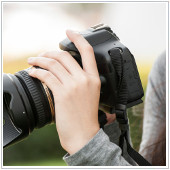Businesses in many industries rely on visuals to sell their products. From that bicycle shop on the corner to the bakery down town, and even the local electronics retailer, having high quality images of your products will help attract customers. What many business owners want to know is how some businesses have such appealing images and how they can add these quality visuals on platforms such as Instagram.
The Truth Behind Some Of Instagram’s Best Images
Those awesome Instagram photos we see aren’t always taken using mobile phones. Instead, many users use digital cameras which offer much better image quality. You can capture some amazing shots with a higher end DSLR cameras with multiple lenses.
If you have one of these cameras and are looking to create high-quality images for Instagram, or any other social media site, you may be slightly confused as to how to get the images onto the platform – especially since many of us use this via the mobile app. To make uploading a little easier, here is a brief guide detailing how to get images from your digital camera onto Instagram.
1. Transfer And Process Images
Once you have taken photos with your camera, you will need to get them off of your camera’s memory and onto your computer’s hard drive. Most camera’s have apps that allow you to do this, so be sure to follow the instructions in the app that came with it.
When your images have been transferred to your computer, you are likely going to want to process them a little bit. This is especially true if you have a DSLR or other high-end point-and-shoot which takes RAW images. These can be quite large and are not compatible with Instagram.
Most images taken with a camera are quite large in size, so you are going to need to use an image editing program like Adobe Photoshop, or free tools like Pixlr to process them. What you are looking to do is to crop your images so that they are square.
If you are used to the advanced photo editing features, then do your edits before cropping. When you crop your images you should crop or resize them so that they are 640X640 pixels. This is the size of all images taken using Instagram’s camera app.
Also, be sure to save the images as JPEGs, as this is the image format used by most smartphone cameras.
2. Save Processed Images In Their Own Folder
It helps to create a folder somewhere on your hard drive (we recommend in the same folder where you save all of your other folders) that is specifically for images you want to post on Instagram.
When you have processed and edited the images to your liking, save the images here. Try using an easy to use file name like the date and a letter or note so you can easily tell which images are which, so you know which to use.
3. Move The Images To Your Device
You can move images using the cloud or by manually transferring the images to your phone. If you decide to manually transfer your files, you will need to plug your device into your computer.
For users with iPhones, you can open iTunes and click on your device followed by Photos. Then select the box beside Sync photos from. Select the file you created in the step above and then Sync to transfer the images over.
For users with Android devices, plug your phone into the computer and drag the folder you created in the step above into the Photos folder of your Android device.
For Windows Phone users, plug your device into your computer and open My Computer on your desktop. You should see your device listed in the window that opens. Open the file system for your device and drag the image files you created above into the Photos folder of your phone.
If you choose to use the cloud to transfer your files, use the operating system’s cloud (e.g., iCloud, Google Drive, or OneDrive) to upload the files. Just be sure to use the same account as the one on your phone.
4. Add Images To Instagram
Once the photos are either on your device, or in the cloud, you can now upload them to Instagram. This can be done by:
- Opening the app and tapping on the camera icon.
- Tapping on the button in the bottom left of the screen.
- Selecting where the image is located on your device. E.g., the Gallery app if you placed the photos in your phone’s hard drive, or the cloud service you used.
- Editing them as you see fit.
Once this is complete, you should be able to post your images as you usually do with any other Instagram image on your phone. Take the time to add filters, and hashtags as well as a good description before you post.
If you would like to learn more about using Instagram to share your images then get in touch and we will show you the advantages of the bigger picture.
Published on 19th June 2014 by Jeanne DeWitt.


